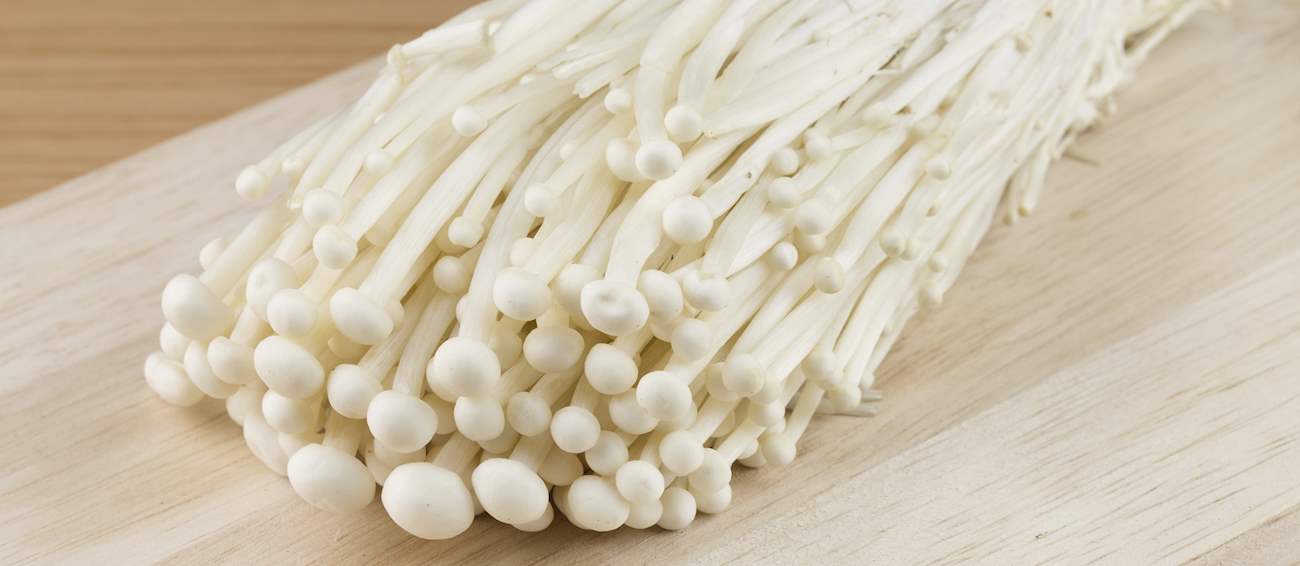TABLE OF CONTENTS
Best Japanese Mushroom Types
Even though small in size, these Japanese mushrooms are packed with vitamins and minerals. With a short white stem and a copper-colored cap, they typically grow in tiny clusters and are usually found in oak and beech forests in Asia. The caps of these small mushrooms are covered in a layer of natural gelatin, which gives them a unique, almost shiny appearance.
It is this coating that differentiates nameko mushrooms from other varieties and gives them a unique and peculiar texture. They have a mild, slightly earthy flavor and a nutty aroma. The most popular dish made with nameko is the legendary Japanese miso soup, in which the gelatinous texture of the mushrooms perfectly matches the rich, slightly salty taste of the soup.
Enokitake are long and thin mushrooms with tiny caps on one end, characterized by their mild, slightly fruity flavor and an unusual visual appearance. The mushrooms are commonly used in numerous Asian dishes, particularly in the cuisines of Japan, China, and Vietnam.
Their crispy texture makes them ideal for dishes such as nabemono and sukiyaki, but enokitake are also often used in soups, salads, and stir-fries. The mushrooms are very easily cultivated and are grown in clusters. Rich in antioxidants, enokitake can be found either fresh or canned in numerous Asian stores.
Matsutake are extremely expensive Japanese mushrooms characterized by a strong, distinctive, and aromatic odor. They are always gathered by hand, found under fallen leaves near pine trees, hence the name matusutake, or pine mushrooms in Japanese.
The mushrooms are gathered from the end of September to the middle of November. It is said that matstutake have a spicy and fruity scent, with a hint of cinnamon. Traditionally, they are cooked with a light seasoning in order to fully appreciate their flavor.
TasteAtlas food rankings are based on the ratings of the TasteAtlas audience, with a series of mechanisms that recognize real users and that ignore bot, nationalist or local patriotic ratings, and give additional value to the ratings of users that the system recognizes as knowledgeable. TasteAtlas Rankings should not be seen as the final global conclusion about food. Their purpose is to promote excellent local foods, instill pride in traditional dishes, and arouse curiosity about dishes you haven’t tried.


